1. Genetic medicine
1.1. 1: Chromosome and Cell Genetics
1.2. 2: Principles of Molecular Genetics
1.3. 4: Strategies for Prevention and Treatment of Genetic Disorders
2. Dentistry
2.1. 1: Dental Infection
2.2. 2: Oral health
3. Themes
3.1. Integrative Theme
3.1.1. 1: Integrative Medicine
3.1.2. 2: Cervical cancer
3.1.3. 3: The Software: Genetic Information – its Expression and Variation
3.1.4. 4: Medical Implications of Dental and Oral Disease
3.1.5. 5: What is PBL?
3.1.6. 6: HIV and Health
3.2. Personal and profissional development theme
3.2.1. 1: introduction to PPD
3.2.2. 2: Careers in Medicine
3.2.3. 3: Presentation skills for OSCE
3.2.4. 4: Ethical Dilemmas in Neonatology
3.3. Community doctor theme
3.3.1. 1: Introduction to Community & Doctor Theme
3.3.1.1. Assignment
3.3.2. 2: Multicultural Issues in Health Delivery
3.3.2.1. Assignment
3.3.3. 3: Debate: Health Care for the Elderly
3.3.3.1. Assignment
3.3.4. 4: Introduction to Epidemiology
3.3.4.1. Assignment
3.4. Evidence based medicine
3.4.1. 1: Introduction to EBM
3.4.2. 2: PICO
3.5. Basic and clinical sciences (OSPE)
3.5.1. Introduction to Anatomy: Bones, Joints, Muscles
3.5.2. Introduction to Cells, Epithelial Tissues
3.5.3. Introduction to Anatomy: Viscera, Vessels and Lymphatics
3.5.4. Connective Tissue and Muscle
3.5.5. Introduction to Microbiology: It’s a Small World
3.5.6. Introduction to Anatomy: Head and Trunk
3.5.7. Vessels
3.5.8. Introduction to Microbiology 2: It’s a Small World
3.5.9. Introduction to Anatomy: Nervous System
3.5.10. Organization of Tissues
3.5.11. Depression
3.5.12. Upper Limb: Bones and Joints
3.5.13. Acute Inflammation
3.5.14. Principles of Nutrition
3.5.15. Upper limb: Shoulder and Arm Muscles
3.5.16. Viruses and Virology
3.5.17. Upper Limb: Forearm and Hand Muscles
3.5.18. Genes and Mutations
3.5.19. Cancer
3.5.20. Investigating Infection and Immunity to Mycobacterium Tuberculosis
3.5.21. Antibodies: Applications in Clinical Immunology
3.5.22. Upper Limb: Vessels
3.5.23. Atherosclerosis
3.5.24. Upper limb: Nerves (+Lesions)
3.5.25. Chronic Inflammation
4. Pathology
4.1. 1: Homeostasis – The Balance between Health and Disease – Stress, Adaptation, Injury and Death
4.2. 2: Tissue Renewal and Repair
4.3. 3: Pathology/Laboratory Medicine
4.4. 4: Acute Inflammation
4.5. 5: Neoplasia
4.6. 6: Chronic Inflammation
5. Pharmacology
5.1. 1: What is Pharmacology?
5.2. 2: How Drugs Work
5.3. 3: Quantization of Drug Effects
5.4. 4: Metabolism of Drugs
5.5. 5: Clinical Effects of Drugs – Pharmacodynamics and Pharmacokinetics
5.6. 6: Adverse Reactions to Drugs (ADRs)
5.7. 7: Non-medical use of Drugs
6. Immunology
6.1. 1: Ancient and Modern Defenses: An Introduction to the Immune System
6.2. 2: Antigen Capture and Presentation ‘What Lymphocytes See’
6.3. 3: Lymphocyte Antigen Receptors & Development of Immune Repertoires
6.4. 4: Activating T Cells, Cytokines, & Chemokines
6.5. 5: Activation of T Lymphocytes in Cell-Mediated Immune Responses
6.6. 6: Activation of B Cells in Humoral Immune Responses
6.7. 7: Effector Mechanisms of Humoral Immunity: Eradicating Extracellular Bacteria
6.8. 8: Self Tolerance and Autoimmunity
6.9. 9: Immune System Dysfunction
6.10. 10: Manipulating Immune Responses
7. Infectious Diseases
7.1. 1: Communicable Diseases in a Global Context
7.2. 2: Eukaryotic Pathogens
7.3. 3: Prokaryotic Pathogens (medically important bacteria)
7.4. 4: Sub Cellular Pathogens
7.5. 5: Mechanisms of Bacterial Pathogenesis
7.6. 6: Mechanisms of Viral Pathogenesis
7.7. 7: Diagnosis of Infectious Diseases
7.8. 8: Control of Infectious Diseases 1
7.9. 9: Control of Infectious Diseases 2
8. medical research
8.1. Introduction to Medical Research
9. Anatomy
9.1. 1: Introduction to Anatomy
9.2. 2: Introduction to Skin, Bones, Joints and Skeletal Muscles
9.3. 3: Introduction to Arteries, Veins and Lymphatics
9.4. 4: Introduction to Viscera, Smooth & Cardiac Muscle
9.5. 5: Introduction to Trunk
9.6. 6: Introduction to Head and Neck
9.7. 7: Introduction to Central Nervous System
9.8. 8: Introduction to Peripheral Nervous System
9.9. 9: Introduction to Limbs
9.10. 10: Upper Limb: Bones and Joints
9.11. 11: Upper Limb: Shoulder and Arm Muscles
9.12. 12: Upper limb: Forearm and Hand Muscles
9.13. 13: Upper limb: Vessels
9.14. 14: Upper limb: Nerves (+ Lesions)
10. Histology
10.1. Histology 1: Introduction to Cells and tissues
10.2. Histology 2: Epithelial Tissue
10.3. 3: Connective Tissue and Muscle
10.4. 4: Vessels – Arteries, Veins, Lymphatics; Nerves
10.5. 5: Organization of Tissue – Gastrointestinal Tract
11. Physiology
11.1. 1: Homeostasis and its Control Mechanisms
11.2. 2: Biological Membranes and their Role in Cellular Homeostasis
11.3. 3: Intracellular Signal Transduction
11.4. 4: Intercellular Communication
11.5. 5: Pregnancy
11.6. 6: Growth and Division of Cells, The Cell Cycle
12. Patient and Doctor Tutorials
12.1. Communication skills
12.1.1. Introduction & Orientation to History Taking
12.1.2. Empathy, Rapport & Non-judgmental Interviewing
12.1.3. Structure of the Medical History and Listening Skills
12.1.4. paediatric history taking
12.1.5. Interviewing with feedback
12.2. Procedural skills
12.2.1. Introduction to the Hospital
12.2.2. Height, Weight, & Waist Circumference (BMI)
12.2.3. infection control general concepts
12.2.3.1. gowning and hand washing
12.3. Clinical Diagnostics Skills
12.3.1. Introduction & Orientation to Physical Examination
12.3.2. Respiratory examination
12.3.3. Cardiovascular examination
12.3.4. Abdominal examination
